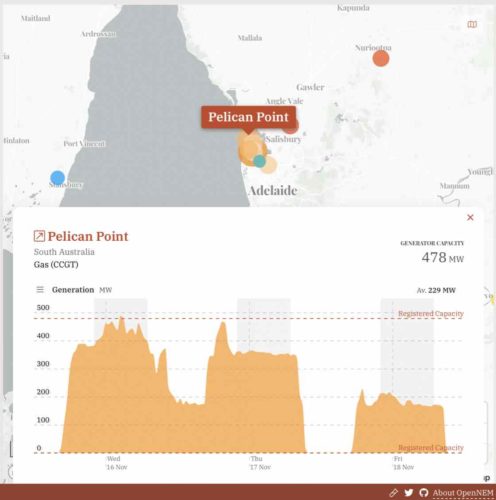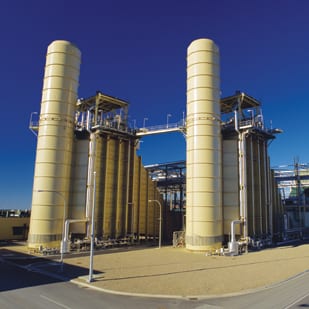It turns out that rooftop solar PV is not the only piece of equipment that has been switched off during the day time hours as authorities seek to maintain stability on South Australia’s isolated grid.
As RenewEconomy has reported this week, South Australia has been forced to switch off as many rooftop solar systems as it can, and encourage others to do the same.
The intention is to minimise any fallout if the grid is hit by another unexpected problem, like the storm that tore down a transmission tower last Saturday and effectively cut the state grid off from the rest of the country.
But because authorities have the power to only switch off around half the state’s rooftop solar, it has now emerged that other measures have been taken to protect the grid, including shutting down the state’s biggest gas units, at Pelican Point near Adelaide, and switching on smaller units, including diesel, elsewhere.
If that feels like shuffling the deck chairs, it is done with a purpose – namely to reduce the risk of a large generator tripping off and causing large amounts of rooftop solar to do the same – a situation that the Australian Energy Market Operator would struggle to contain while the grid is in its isolated state.

The small units that were switched on in place of the two 240MW units at Pelican Point in the middle of the day include the 157MW Dry Creek peaking gas facility and some smaller diesel generators at Port Lincoln, a long way from the major population and rooftop PV centre of Adelaide.
The reason is that it reduces the risk of a large unit in Adelaide (Pelican Point) tripping for whatever reason, and then taking a large amount of rooftop solar with it. Switching on multiple smaller units spreads the risk.
It’s not the only action AEMO has taken. RenewEconomy understands that the state’s big batteries – Hornsdale, Lake Bonney and Dalrymple North – have also been deliberately curtailed in a “half full” state so they can act as shock absorbers in response to any further big disturbances in the grid.
The reason they are half full is that AEMO can’t tell whether they will need to discharge or charge in an emergency – that will depend on whether any unit that trips is producing electricity (such as a gas or diesel generator), or consuming it (like a big factory).
If a generator trips, the batteries will step in within milliseconds and discharge their stored electricity, while if a big load trips they will fill the gap by quickly starting to charge.
That way, the big batteries provide a huge amount of flexibility. They are still operating at small levels of output to respond to smaller variations in frequency control, but are essentially on hold until the grid is re-connected to the rest of the National Electricity Market.
Local transmission company ElectraNet says it continues to work on repairs of the big transmission tower that was felled by storms last Saturday, and caused multiple circuit trips, isolating the state.
The timetable risks being complicated by a new wave of storms expected over the coming weekend, but ElectraNet hopes that temporary towers can be energised by the end of Sunday.









